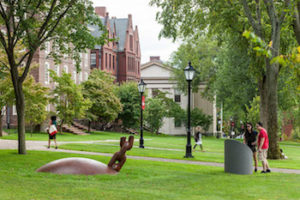
Brown campus
*On this date in 2007, Brown University pledged to raise $10 million to amend its role in benefiting from the American slave trade of Black Africans.
The money will be directed to local public schools, and free tuition will be given to graduate students who pledge to work there in response to a report that found slave labor played a role in the university's beginnings. The university will also explore creating an academic center on slavery and justice, strengthening its Africana Studies Department, beginning planning for a slavery memorial, and revising its official history to provide a more accurate account of the school's early years.
"One of the clearest messages in the Slavery and Justice Report is that institutions of higher education must take a greater interest in the health of their local communities, especially kindergarten through 12th-grade education," Brown President Ruth J. Simmons said in a statement.
That fall, a committee issued the report instructed in 2003 to study the university's early relationship with slavery and recommend how the school should take responsibility. It identified about 30 former members of the college's governing corporation who once owned or captained slave ships. It also found that slave labor was used to construct Brown's oldest building, and money used to create the university and ensure its early growth was derived directly or indirectly from the slave trade.
The Brown report is the latest revelation that Northern businesses and institutions benefited from slavery. Countless other institutions might be surprised and ashamed if they dug deep into their pasts as Brown has over the past three years.